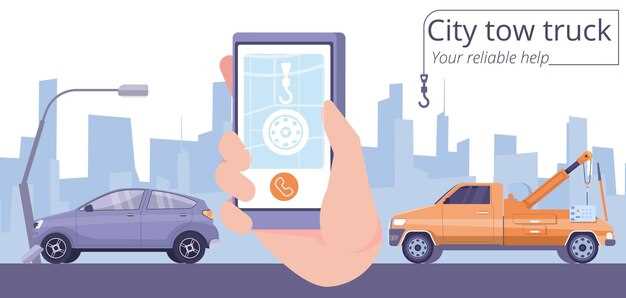What happens if your car is delayed in transit?

In today’s fast-paced world, the efficiency of transport systems is critical for personal and commercial success. One of the most significant factors affecting these systems is the delay experienced during transit. Whether due to traffic congestion, mechanical issues, or unforeseen circumstances, such delays can disrupt even the most carefully laid plans.
Understanding the implications of car delays is essential for both individuals and businesses. For personal travel, these delays can lead to missed appointments and altered schedules, creating a cascade of negative effects on daily routines. Meanwhile, for businesses reliant on timely deliveries, even a minor delay can result in economic losses, damaged reputations, and dissatisfied customers.
The ripple effects of transit disruptions extend beyond individual inconvenience; they significantly impact broader economic systems. Analyzing these consequences provides valuable insights that can aid in developing more resilient transport strategies and improving overall traffic management. Proper management of transit delays is essential for maintaining efficient operations and ensuring that strategic plans can be effectively executed.
Impact on Delivery Schedules and Business Operations

Delays in transport can significantly disrupt delivery schedules, consequently affecting overall business operations. When vehicles are not on time, it creates a ripple effect throughout the supply chain. Customers expect punctuality, and any unanticipated delay can lead to dissatisfaction and lost sales.
Moreover, businesses often rely on precise delivery times to manage their inventory efficiently. A unexpected delay can result in stock shortages or overstock situations, which can strain financial resources. Companies may incur additional costs, including expedited shipping fees to compensate for lost time, further impacting their bottom line.
To mitigate the risks associated with transport delays, businesses should develop a robust contingency plan. This includes outlining alternative routes, utilizing real-time tracking technology, and maintaining open communication with stakeholders. Such measures can help to minimize the disruption caused by delays and keep operations running smoothly.
In conclusion, the impact of car delays during transit transcends beyond mere inconvenience; it has broad implications for delivery schedules and overall business functionality. By proactively addressing potential issues, businesses can better navigate the complexities of logistics and maintain customer satisfaction.
Strategies for Developing a Robust Contingency Plan
To address car delays during transit effectively, a well-structured contingency plan is essential. This plan should include specific strategies that enable a transport organization to mitigate unforeseen issues efficiently.
First, conducting a thorough risk assessment is critical. Identify potential causes of delays, such as weather conditions, traffic congestion, mechanical failures, or logistical challenges. Understanding these risks allows for targeted solutions.
Second, establish clear communication channels among all stakeholders involved in the transport process. This ensures that all parties, including drivers, dispatchers, and customers, are informed in real-time about delays and available alternatives.
Third, develop alternative routing strategies. Create a database of alternate routes that can be utilized when primary routes are compromised. This flexibility can significantly reduce the impact of delays on transit schedules.
Fourth, implement technology solutions to enhance operational efficiency. Utilizing GPS tracking, route optimization software, and real-time traffic updates can enhance decision-making and responsiveness during unexpected situations.
Fifth, conduct regular training sessions for staff. Equip your team with the skills necessary to react swiftly and effectively to delays. Scenario-based training can help prepare them for various contingencies.
Finally, regularly review and update the contingency plan. Continuous evaluation of the effectiveness of your strategies allows for modifications based on new challenges or advancements in technology. This ensures the plan remains relevant and effective in mitigating the consequences of car delays during transit.
Mitigating Customer Dissatisfaction Due to Transit Delays

To effectively mitigate customer dissatisfaction caused by transport delays, companies must implement a comprehensive plan that addresses both communication and operational strategies. Timely and transparent communication is crucial; customers should be informed about potential delays as soon as they occur. Utilizing multiple channels, such as emails, SMS notifications, or mobile app alerts, ensures that updates reach customers promptly.
Furthermore, companies can enhance customer experience by offering accurate estimates of new arrival times. Implementing real-time tracking systems allows clients to monitor their shipments, giving them a sense of control over the situation. By providing clarity on the timeline, businesses can reduce anxiety and foster trust even amidst delays.
Operationally, having contingency plans in place can help minimize the impact of transport delays. This includes creating alternative routes, optimizing logistics, and ensuring that staff are trained to handle unexpected situations efficiently. By proactively planning for potential disruptions, companies can respond swiftly and maintain service reliability.
Additionally, offering compensation or incentives, such as discounts on future services or loyalty points, can further alleviate customer dissatisfaction. These gestures demonstrate a commitment to customer satisfaction and can turn a negative experience into a lasting relationship.
Ultimately, addressing customer concerns during transport delays involves a blend of effective communication, operational readiness, and customer-focused policies that reflect an understanding of the challenges faced by clients.

